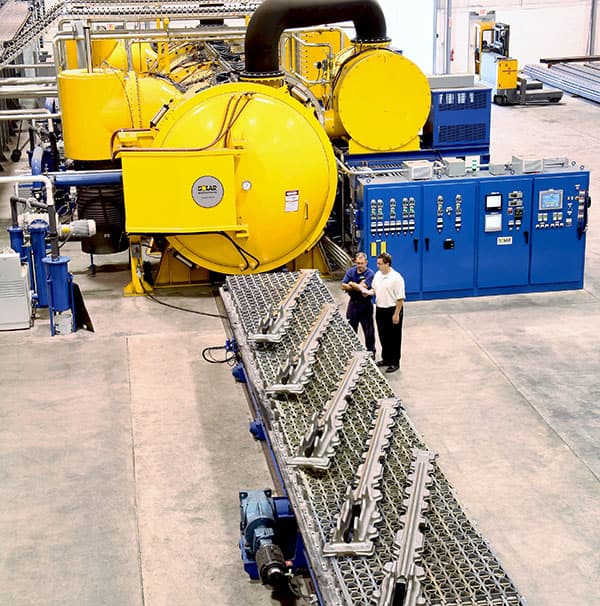CALL: 1-855-WE-HEAT-IT
Ask the Expert: Solar Atmospheres of Western PA’s Director of Sales Discusses Creep Flattening Titanium
1) What are typical temperatures for creep flattening titanium parts?
Almost all the titanium products are creep flattened above 1,000°F. I would say creep flattening is usually performed between 1,250°F – 1,350°F but it’s alloy dependent. Temperatures and hold times will vary with composition. Typically, a two hour hold at temperature using work thermocouples is sufficient.
2) Can correcting or creep flattening titanium only be done in vacuum?
I wish, but no. We also do some jobs in our air atmosphere furnaces, but this is typically reserved for parts that have ample stock on them, such as rough machined parts, plates, blanks. Air furnaces allow customers some savings, but there must be enough stock to remove any surface contamination. For finished parts, it’s a different story. You need to bake out the vacuum furnace at 2,400°F prior to the run and ensure vacuum levels remain in the 10-5 Torr scale. Otherwise, you will see surface oxidation and the dreaded alpha case. Don’t forget to bake out the fixturing at a minimum of 150°F higher than the creep flatting temperature.
3) What type of fixturing should I consider when creep flattening? Can I also creep a shape or detail into the titanium?
I like graphite tooling to flatten or even develop a shape or detail into titanium parts. We know metals expand and contract during the thermal process. Graphite allows these materials to move in the desired direction with little friction. Plus, it prevents movement along dimensional axes that must be held constant. We’ve successfully used metallic fixtures in the past, but graphite is my go-to.
4) My titanium part is moving during machining, can creep flattening help?
Yes! This is very common. We perform in-process stress relieving to minimize movement typically seen during machining. Because creep flattening and stress relieving are often done at the same temperature, we can relieve the stress in a part while forming it back to the required shape for final machining. A lot of work takes place in the background to accomplish this, but it can be done successfully.
 5) Will reheating titanium above 1,000°F affect my material certification?
5) Will reheating titanium above 1,000°F affect my material certification?
Give your heat treater your material certifications. Many mills will certify to aerospace material specification AMS 2801, AMS 4905, AMS 4911, AMS-H-81200, etc. The material often can be re-annealed while simultaneously creep flattening. Know the specification and/or the original mill anneal parameters beforehand. Then you can work within required temperature ranges while creep flattening or shaping titanium parts. Also keep in mind, when stress relieving or creep flattening in deep vacuum, you’re extracting hydrogen at the same time for free. Stress-relieving, shaping, degassing – there is a great deal of value added with creep flattening in a vacuum furnace.
For more information: https://solaratm.com/vacuum-heat-treating/vacuum-creep-forming
And featured in Aerospace Manufacturing and Design Magazine:https://www.aerospacemanufacturinganddesign.com/article/questions-with-michael-johnson-october-2021/



